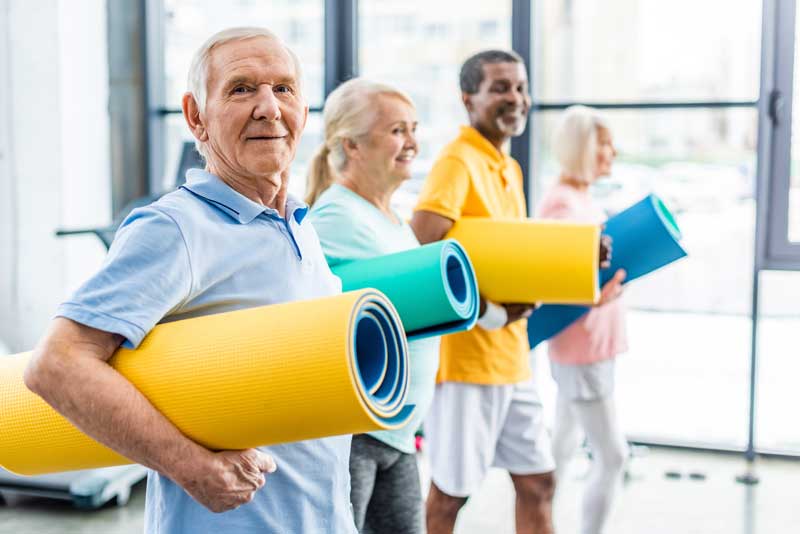-
Your shopping cart is empty!

Aging is associated with significant changes in both cardiac and vascular structure and function that lower the threshold for clinical signs and symptoms, making older people more susceptible to cardiovascular diseases, morbidity and mortality. Understanding of age-related cardiovascular changes is necessary for effective and efficient prevention and treatment of cardiovascular disease in the elderly.
Cardiac aging is associated with progressive loss of myocytes and compensating mild hypertrophy, but also with reduced sensitivity to sympathetic stimuli that compromises myocardial contractility and pumping ability in older people. Numerous epidemiological studies were published reporting the strong association between physical activity in cardiovascular health with 30% to 40% reduction in cardiovascular mortality in active men and women of different ages.
Physiological changes in elderly
One of the most important physiological changes that occur in response to advanced aging is a decline in maximal aerobic capacity (i.e. cardiorespiratory fitness) represented by peak exercise oxygen consumption. The age-associated decline in maximal aerobic capacity is non-linear and increases progressively with each decade of life e.g. 3–6% in the third and fourth decades and > 20% per decade after age 70.
The ACSM (American College of Sports Medicine)/AHA (American Heart Association) Physical Activity Recommendations for Older Adults suggest three different options:
Setting up your cardio workout
Moderate exercises
A moderate level of exercise is when you can still carry on a full conversation, but you will be breathing heavier and may be sweating. Brisk walking, easy jogging, swimming and dancing are moderate-intensity aerobic activities. If you have any orthopaedic problems, you may want to use aquatic exercises or a stationary cycle to reduce the stress on your joints.
Tips to Start Walking
For older adults, walking is the most accessible exercise. You can start by:
Treadmill walking
Walking on the treadmill is an excellent way for seniors to stay active. Just 30 minutes a day can reduce health risks and maintain fitness, while burning calories and keeping the metabolic rate boosted. The recommended amount of cardiovascular exercise for seniors over age 65 is 30 minutes per day, five days per week. If necessary, the sessions can be broken into 3 intervals of 10 minutes. Using both forward and backward walking is an effective approach to improve postural control and gait performance in the elderly population.
Strength Training
Strength training exercises (or resistance exercises) are especially important for older adults to prevent loss of muscle mass and bone density, as well as to be able to move and function better. Lifting, pushing and pulling exercises will build muscle strength and endurance. You can use exercise machines at the gym, resistance bands, or free weights such as dumbbells, barbells, medicine balls, and kettlebells. Exercises such as calisthenics use your own body weight to provide resistance. Ideally, strength training should incorporate all muscle groups, and should be done 2 to 3 days per week.
Flexibility Exercises
Flexibility exercises such as yoga and tai chi are important to lower the risk of injuries and improve posture and balance, as well as increasing strength. Spend 10 minutes two days per week minimum to stretch your major muscle and tendon groups. Take 10 to 30 seconds per stretch, and repeat each stretch three to four times.
Avoid Inactivity over Age 65
If you have limitations that don't allow you to meet the guidelines, the most important thing is to be active in some way each day. Any amount of exercise is better than none, so getting started is the key. Happy exercising!
References